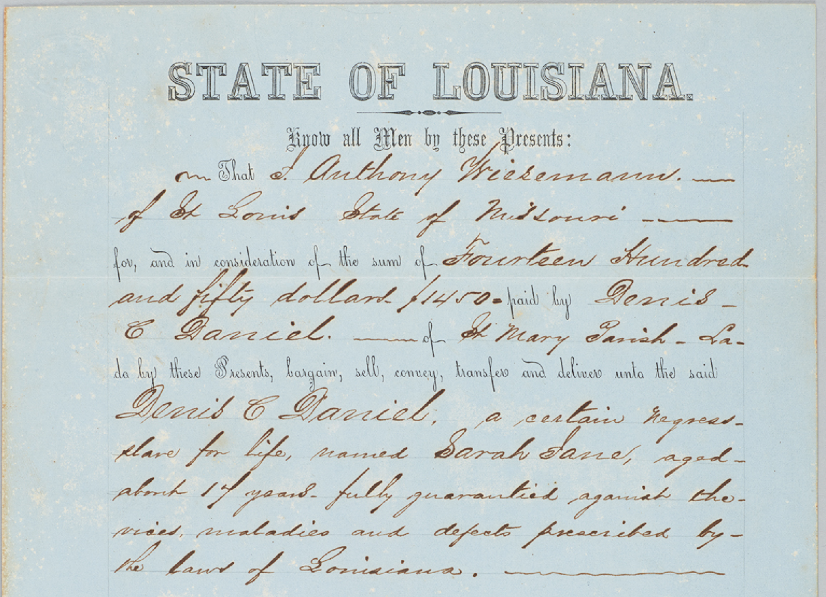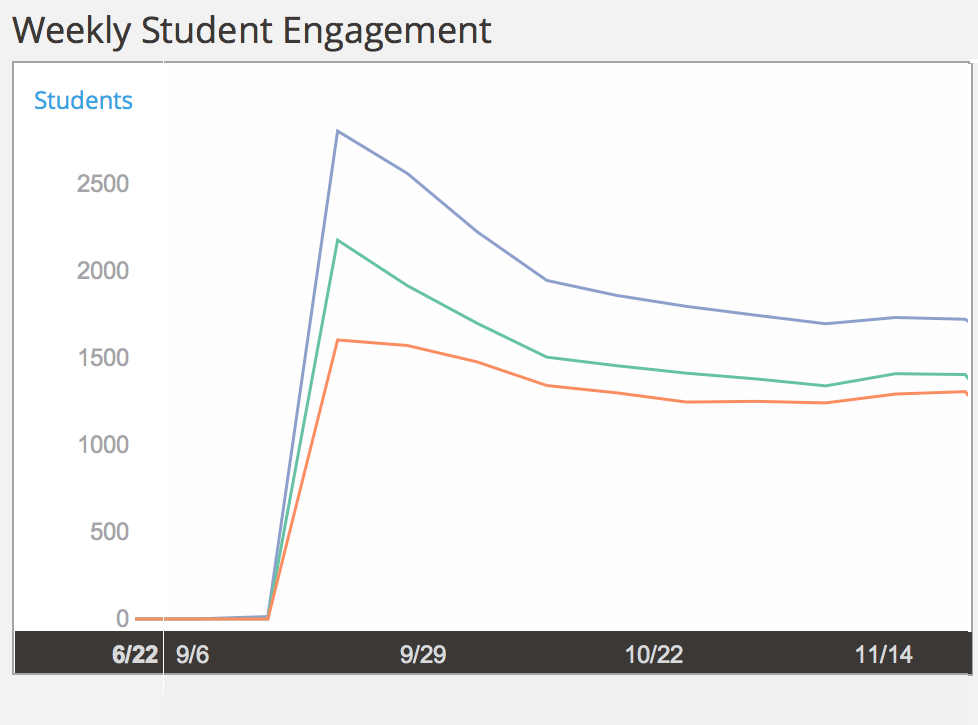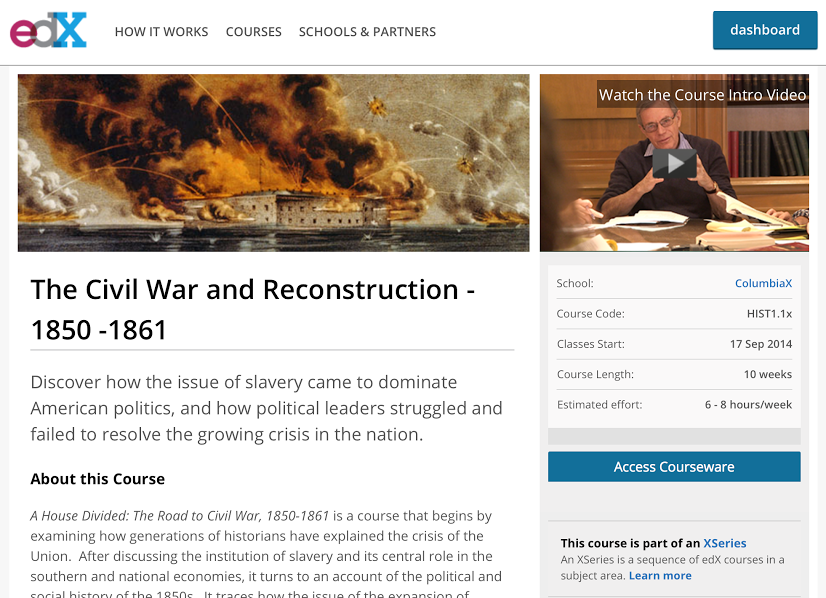Quick Lessons from Eric Foner’s ColumbiaX MOOC
This past week, Columbia University’s first course on the edX portal ended. The portal, ColumbiaX, launched with Part I of a three-part MOOC series with Professor Eric Foner on the Civil War and Reconstruction. While it will take us some time to develop a complete analysis, we felt urgency to share some of the results and lessons learned using information from the mid-course survey and the statistical data available from edX.
“This particular MOOC technology enables me to reach more students than I have in my entire career.” – Eric Foner, the DeWitt Clinton Professor of History, Columbia University.
The 10-week course, covering the antebellum period from 1850 to 1861, launched on September 17, 2014 after a nine-month planning period with Professor Eric Foner. The production plan included recording: lectures from the semester-long course in the spring of 2014; interviews featuring Professor Foner and his lead TA, Tim Shenk; small seminar sessions featuring lively interplay among Columbia students and Foner; and Foner’s exploration of artifacts during museum visits.
The CCNMTL production team edited all of the video, splitting the lecture recordings into 7-to-12-minute segments. With Professor Foner and Shenk’s assistance, the team enhanced each video segment with images and maps, and constructed questions to follow each segment, to help course participants remember key points. The team also interspersed among the video segments several types of learning activities to foster discussion, analysis, and engagement with the image galleries; opinion polls; and map-based interactive activities. The discussion forum was active throughout the course, and was monitored by the 10 course TAs and Professor Foner.  With assistance from Thai Jones, the curator for U.S. History at Columbia University's Rare Book & Manuscript Library (RBML), the production team added a research component to the online course by featuring high-resolution images of primary sources taken from the RBML holdings. Artifacts such as a slave bill of sale and a slave auction poster gave the course participants room for exploration and reflection beyond the course lectures and suggested readings. The team developed assessments, including weekly quizzes and a final exam. Participants taking the MOOC for credit had to score above 70% on these assessments to receive a certificate of completion.
With assistance from Thai Jones, the curator for U.S. History at Columbia University's Rare Book & Manuscript Library (RBML), the production team added a research component to the online course by featuring high-resolution images of primary sources taken from the RBML holdings. Artifacts such as a slave bill of sale and a slave auction poster gave the course participants room for exploration and reflection beyond the course lectures and suggested readings. The team developed assessments, including weekly quizzes and a final exam. Participants taking the MOOC for credit had to score above 70% on these assessments to receive a certificate of completion.
Finally, the course media was released using a Creative Commons license. To allow more efficient use of that license, course videos were also released on YouTube about 10 days after their release on edX. For more details on the course, see the lengthy review in the Columbia Magazine.
Statistics: Demographics
Using demographic information gathered by edX for Part I, we see that:
- 7,024 participants enrolled
- 2,805 first-week active participants (40% of enrolled)
- participants from 137 countries; 60% from the United States
- 60% male; 40% female
- 24% of participants were 25 years old or younger, 29% were between 26 and 40 years of age, and 44% were 41 years old or older (including 23% over 60).
- 24% of participants had a high school diploma or less, 34.7% had a college degree, and 42.3% had an advanced degree
Statistics: Activity
Comparing across all edX courses, “activity” in Part I was extremely high. EdX defines “activity” as the watching of a video and/or the attempt of a problem or quiz question: 18% of enrolled students in Part I were still trying problems the last week of the course, while the average across all courses is 5%. The retention rate for Part I of the Civil War and Reconstruction course ranks in the top 10% of all edX courses.
Another way to look at these numbers is to use the number of active students as the base number, understanding that the number of enrolled students is typically inflated by many who sign up but never actually participate in the course. The table below shows those numbers for the first and last week of the course using the three categories that edX captures: active students, watched a video, tried a problem.

| Week 1 | Week 10 | Sustained engagement | |
| Active students | 2,805 | 1,723 | 61 % |
| Watched a video | 2,178 | 1,405 | 65 % |
| Tried a problem | 1,604 | 1,307 | 81 % |
Interestingly, there was an upward trend in engagement over the last fours weeks for all three categories. This is unusual for MOOCs, which typically shed students from week to week.
Lessons Learned
Participant feedback, via discussion threads, polling, and data analytics, has given us a clearer view of what works well in a humanities MOOC, and what needs to be improved. We are making several adjustments to Parts II and III based on these findings. Here are the main lessons learned:
- Flexible due dates. Retention rates are a common problem for MOOCs; on average, 95% of participants who enroll fail to complete a course. In an attempt to boost retention, we tested open assignments that had no due dates till the end of the course. Research suggests that students drop off if they have missed several assessment deadlines, but with the flexible deadlines, 18% of enrolled participants finished the Civil War and Reconstruction course. Using the more meaningful number of participants active the first week as the base, we can conclude that 61% finished the course.
- Open discussions. Many students felt that the discussion forum questions were too focused, and hesitated to engage in particular threads. In Part II, we have created a combination of weekly threads; some are still constructed by the teaching staff, while other threads are open and general, allowing participants to bring up any idea, question, or issue they feel pertinent to the week’s material. Conversation is a large part of a successful online course; we have therefore created more avenues for participants to talk and exchange ideas and opinions.
- Segmenting and signposting. While it was important to break up lecture videos into short segments, it was just as important to have natural breaks with informative titles to help students stay on track. This provided participants a quick overview of the themes that would be covered during the week’s lecture.
Participants’ Comments
We also received many great comments throughout the course. Most of these were unsolicited expressions of appreciation. It was clear that course participants loved Professor Foner’s lecture style:
“The lectures are superb. The decision to break the lectures down into 8-12 minute segments, so that one can proceed at one's own pace, was brilliant. Not going for hyperbole here. Had the first lecture been an hour I might have listened to all of it but I would have felt it unlikely I could do that often, and might not have continued the course. Breaking it up this way was essential for me.” - Course Participant Age 60-69
In some cases, Foner’s influence as a historian was pronounced:
“I’d like to say thank you for your outstanding course having a transforming effect on me. I’m a freshman at the University doing engineering while my real interest is in humanities, especially history. I lacked the courage to make [history] my field of study and thus chose engineering instead, which I’m good at… [Now] I’ve decided to transfer my programme to study [...] history and hopefully become a historian like you who accomplishes a lot.”
It also became apparent that homeschooled children were avid consumers of Professor Foner’s lectures.
“I am a parent of 3 mature homeschoolers who have been taking the first section of Eric Foner's Civil War - Reconstruction course... I have never seen a middle schooler and 2 high schoolers so engaged in an online course! My sons really enjoy this instructor (so much so they often quote what he has said in a lesson) and I believe they will want to take all of his courses.”
Future Plans
While several ideas are being considered in our future plans, here are a couple of ideas that we would like to incorporate into our iterative design model.
- Create groups, or cohorts, who can work together inside of the edX courses, but then continue to build and strengthen their community after they finish. A Columbia University alumni cohort is in the planning stage, as is a cohort for history teachers, enabling them to share materials, course plans, and ideas.
- Build a website / repository where all materials can live outside of edX, easily available and accessible to the public. The repository would house lecture videos, primary sources, images, course plans, question banks, and more. We hope that history teachers around the country will use parts of the course materials in their classrooms.
Our ColumbiaX experience has demonstrated how the combination of an excellent teacher, energetic teaching assistants, an innovative production and design staff, and online technology can be combined to create an effective learning experience for thousands of history enthusiasts around the globe.
----
Editor's Note: If you are interested in participating in the second course––A New Birth of Freedom: The Civil War, 1861-1865––visit bit.ly/cwrMOOC2. The course began on Monday, December 1, 2014 but there is still plenty of time to catch up.



